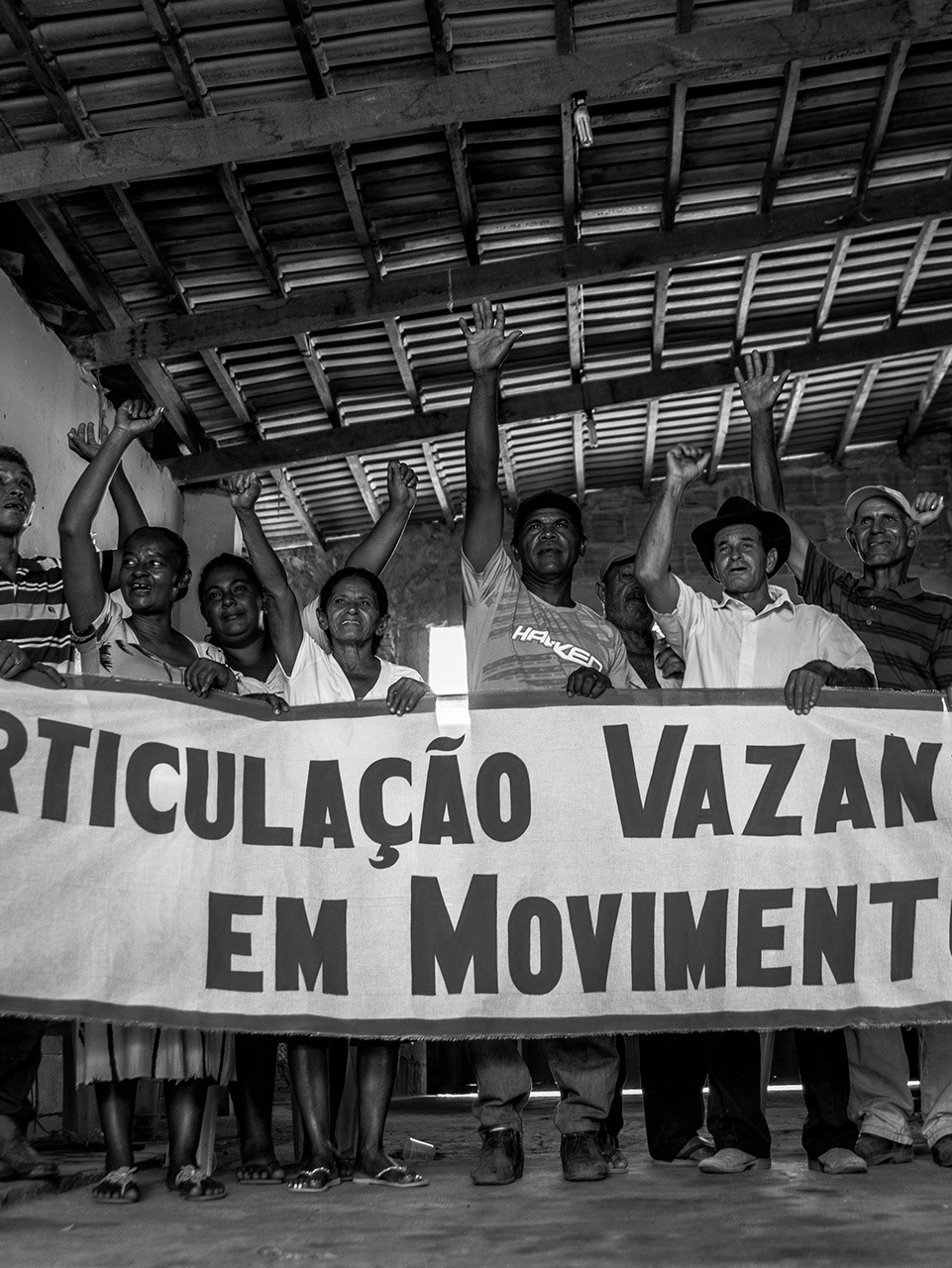Mr. Domingos smiles as the leather that'll be used for drum making dries.
Mãe Romana Settlement, Quilombo de Praia, 2015
by Sara Gehren
Mãe Romana Settlement, Quilombo de Praia, 2015
by Sara Gehren
Dona Izabel holds the quilombo's banner at her house.
Quilombo da Lapinha, Matias Cardoso, 2017
by Breno Lima
Quilombo da Lapinha, Matias Cardoso, 2017
by Breno Lima
Quilombolas
The quilombos from the São Francisco River area are communities founded by fugitive enslaved people in search for refuge during Brazil’s colonial age. Around a hundred different quilombola communities have settled in an area of over 17.000 km² (about 4.200.791 acres). The quilombola presence in the region dates, at least, from the 18th century.
Their organized political struggle has resulted in the official acknowledgement of over a hundred communities by the Palmares Cultural Foundation, the federal government branch for promotion and preservation of black historical, cultural, social and economic values. But there are still many obstacles facing those communities, including the quandary involving Conservation Units, or environmental reserves, promoted by the state of Minas Gerais. Those public projects don’t always recognize the traditional communities that have been living in the protected areas for centuries. And, despite the international comprehension of their important part as guardians of the environment, they are often displaced from their traditional lands. Still, the quilombolas resist and take pride in their identity and in their history.
Kids playing after lunch in the Vereda Settlement Inauguration Party.
Acampamento Verede, Quilombo de Praia, 2015
by Sara Gehren
Acampamento Verede, Quilombo de Praia, 2015
by Sara Gehren
The five communities that form Quilombo de Praia are located near Matias Cardoso municipality, and have been acknowledged and certified by the Palmares Cultural Foundation in 2005. The quilombo was formed around 200 years ago by families coming from south of Bahia, a neighbouring state to Minas Gerais. Quilombo de Praia has a rich spirituality and culture, with important cultural practices such as the reizado, the batuques in traditional religious festivities and many well-known midwifes. One of them is Mother Piana, who delivered more than 2000 babies and received the Maria da Cruz medal, a tribute given by the state of Minas Gerais.
In 2015, 165 families from Quilombo de Praia recaptured a traditional territory, owned at the time by a private company. This bold action triggered a legal struggle between the community and the company, which continues to this day. The settlement was named “Mãe Romana”, after one of the oldest midwifes of the region.
Izabel and Passim ride their horses at Quilombo da Lapinha.
Quilombo da Lapinha, Matias Cardoso, 2017
by Breno Lima
Quilombo da Lapinha, Matias Cardoso, 2017
by Breno Lima
Quilombo da Lapinha has two historical roots. The first being from the quilombolas who, escaping from slavery, have settled in the region. And the second one is related to families moving from deep rural Brazil during periods of drought. Both origins became intertwined throughout history and gave the quilombo a diverse identity, making the residents from Lapinha both quilombolas and vazanteiros. As such, they live and grow crops according to the cycles of the São Francisco River and its distributaries.
Acknowledged and certified in 2005 by the Palmares Cultural Foundation, Quilombo da Lapinha isn’t free of land disputes. In particular, the land known as Fazenda Casa Grande, part of the ancestral territories from which the quilombolas were displaced decades ago. Fazenda Casa Grande is now in ownership of the IEF, the State Forest Institute of Minas Gerais, branch of the state government for conservation parks and forests. As the state government doesn’t acknowledges the quilombolas and their contribution to the protection of the environment, they are at a constant threat of displacement. In 2019, an eviction request was suspended by the federal justice, giving some rest to dozens of quilombola families.

